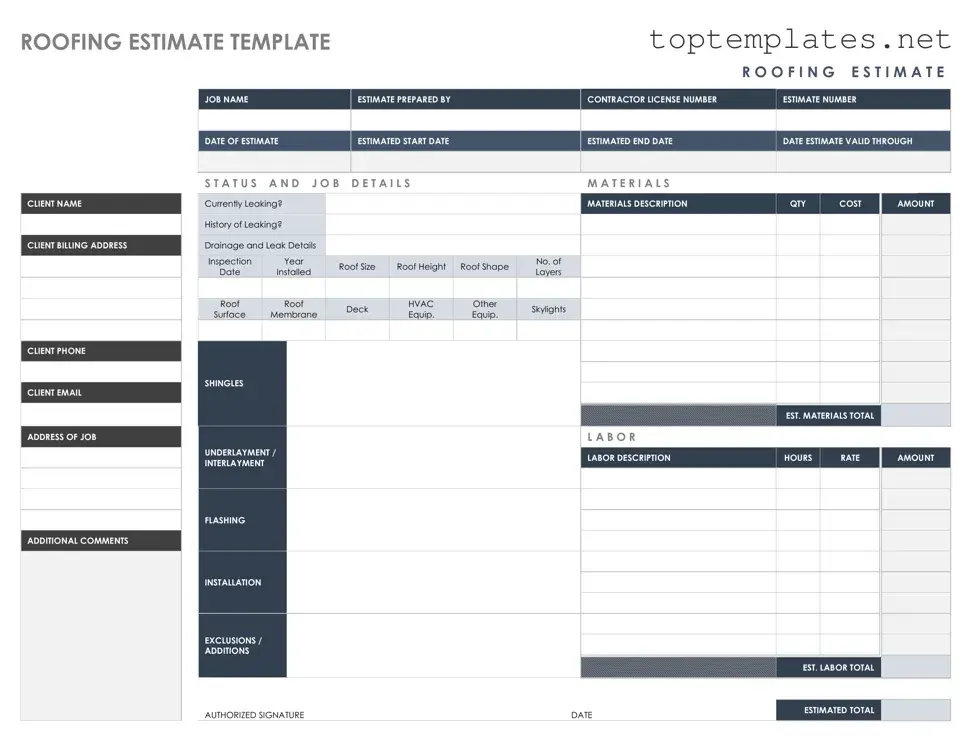What information is required to complete the Roofing Estimate form?
To accurately fill out the Roofing Estimate form, you will need to provide detailed information about the roofing project. This includes the homeowner’s contact information, the address of the property, the type of roofing material desired, the size of the roof (in square footage), any known damage or areas in need of special attention, and the desired time frame for project completion. Additionally, having photos or detailed descriptions of the current roof's condition can be extremely helpful in creating a precise estimate.
How is the total cost calculated on the Roofing Estimate form?
The total cost on the Roofing Estimate form is calculated by considering several factors. These include the cost of materials, labor, any necessary permits, and the complexity of the job. Other considerations might be the height and accessibility of the roof, the degree of slope, and any special equipment that might be needed for the job. The estimator will take all these factors into account to provide as accurate a quote as possible.
Can changes be made to the Roofing Estimate after it has been completed?
Yes, changes can be made to the Roofing Estimate after it has been completed. We understand that project requirements can evolve or that additional damage might be discovered. It is essential to communicate any changes or new findings to the contractor as soon as possible so that the estimate can be updated accordingly to reflect the most accurate cost and timeline.
Is the estimate provided on the Roofing Estimate form final and binding?
The estimate provided is a good-faith attempt to predict the project's final costs based on the information available at the time. However, it is not final or binding. Unforeseen circumstances such as changes in material costs, discovery of additional roof damage, or modifications to the project scope can affect the final price. It is always best to discuss these potential variables with your contractor ahead of time.
How long is the Roofing Estimate valid?
The validity of the Roofing Estimate varies, but generally, it is held for 30 to 60 days. This timeframe allows homeowners to make decisions without feeling rushed. Factors such as seasonal demand or fluctuations in material costs can affect this period. To ensure clarity, the expiration date of the estimate should be clearly stated on the document.
What should I do if I have questions about the Roofing Estimate I received?
If you have any questions or need clarification regarding your Roofing Estimate, do not hesitate to contact your roofing contractor directly. It's important that you fully understand all aspects of the estimate before moving forward. A reputable contractor will be more than happy to address your concerns, provide detailed explanations, and ensure you are comfortable with the proposed work and costs.

